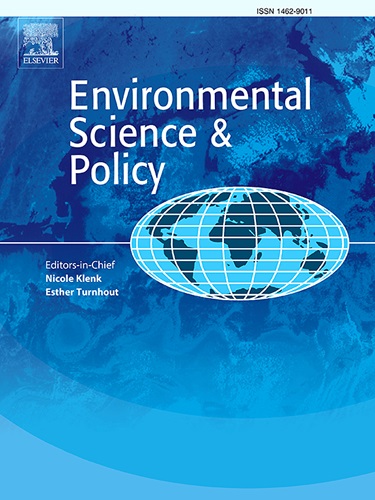跨学科解决方案,使基于自然的海岸保护解决方案实现生态和工程成果
IF 5.2
2区 环境科学与生态学
Q1 ENVIRONMENTAL SCIENCES
引用次数: 0
摘要
基于自然的解决方案(NbS)提出了一种很有前途的沿海保护方法,利用沿海生态系统的自然能力来减轻灾害。尽管具有潜力,但国家统计局的实际实施面临障碍,包括缺乏明确的设计和实施指导。在这项研究中,我们采访了34名参与国家统计局海岸保护项目的从业者,以(1)确定关键的感知障碍和建议/或实现的解决方案;(2)评估这些障碍在从业者群体(包括海岸工程师、海岸工程科学家、生态学家和/或项目经理)之间的差异。在访谈中,从业人员确定了国家统计局实施的34个不同挑战,分为14类,345个解决方案分为15类。不同的从业者群体面临的挑战和解决方案各不相同。虽然所有小组都认为对NbS的不熟悉是一个关键挑战,但海岸工程师和海岸工程科学家对NbS的挑战(如风险、技术指南和数据缺陷)和解决方案(如混合解决方案)的看法更侧重于设计。相比之下,生态学家和项目经理通常面临更多以实施为重点的挑战(例如成本/缺乏资金)和机会驱动的解决方案(例如社区接受和教育)。海岸工程师建议最多的解决方案是混合解决方案,而海岸工程科学家建议跨学科的团队。工程师和生态学家之间的人类中心-生态中心差距突出了NbS团队跨学科和使用标准化语言的必要性。克服国家统计局面临的挑战还需要倡导政府支持和政策改革,以及尽早与土著人民进行有意义的接触和能力建设,这被认为是应对当前国家统计局挑战的关键解决方案。本文章由计算机程序翻译,如有差异,请以英文原文为准。
Interdisciplinary solutions to enable nature-based solutions for coastal protection achieve ecological and engineering outcomes
Nature-based solutions (NbS) present a promising approach to coastal protection, leveraging the natural capacity of coastal ecosystems to mitigate hazards. Despite their potential, the practical implementation of NbS faces obstacles, including a lack of clear guidance for design and implementation. In this study, we conducted interviews with 34 practitioners involved in NbS projects for coastal protection to (1) identify key perceived barriers and suggested/or realised solutions and (2) assess how these varied among practitioner groups, spanning Coastal Engineers, Coastal Engineering Scientists, Ecologists, and/or Project Managers. During the interviews, practitioners identified 34 distinct challenges to NbS implementation, falling into 14 categories and 345 solutions into 15 categories. Both challenges and solutions varied between practitioner groups. While all groups identified unfamiliarity with NbS as a key challenge, Coastal Engineers and Coastal Engineering Scientists had more design-focused views about NbS challenges (e.g. risk, technical guidelines and data deficits) and solutions (e.g. hybrid solutions). In contrast, Ecologists and Project Managers typically had more implementation-focused challenges (e.g. cost/lack of funding) and opportunity-driven solutions (e.g. community acceptance and education). The solutions most suggested by Coastal Engineers were for hybrid solutions, whereas Coastal Engineering Scientists suggested interdisciplinary teams. The anthropocentric-ecocentric gap between engineers and ecologists highlights the need for NbS teams to be interdisciplinary and utilise standardised language. Overcoming challenges to NbS will also require advocacy for government support and policy reform, along with early, meaningful engagement and capacity building with Indigenous people, which was identified as a crucial solution to current NbS challenges.
求助全文
通过发布文献求助,成功后即可免费获取论文全文。
去求助
来源期刊

Environmental Science & Policy
环境科学-环境科学
CiteScore
10.90
自引率
8.30%
发文量
332
审稿时长
68 days
期刊介绍:
Environmental Science & Policy promotes communication among government, business and industry, academia, and non-governmental organisations who are instrumental in the solution of environmental problems. It also seeks to advance interdisciplinary research of policy relevance on environmental issues such as climate change, biodiversity, environmental pollution and wastes, renewable and non-renewable natural resources, sustainability, and the interactions among these issues. The journal emphasises the linkages between these environmental issues and social and economic issues such as production, transport, consumption, growth, demographic changes, well-being, and health. However, the subject coverage will not be restricted to these issues and the introduction of new dimensions will be encouraged.
 求助内容:
求助内容: 应助结果提醒方式:
应助结果提醒方式:


